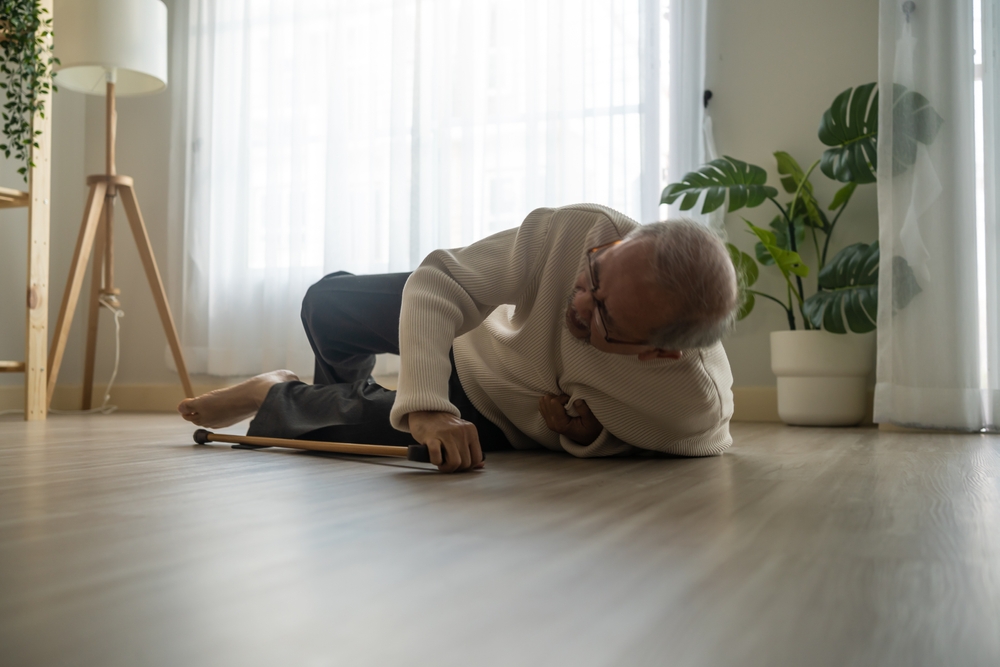As people age, they face unique health challenges, one of which is an increased risk of falling. Understanding how to recognize fall risk in elderly individuals is vital for their safety and well-being. Falls can lead to serious injuries, impacting independence and quality of life. In this article, we’ll explore the signs, contributing factors, and preventive measures that can help mitigate this risk.

Why Identifying Fall Risk is Important
Falls are a leading cause of injury among the elderly. Recognizing the signs of fall risk can prevent serious injuries. Early identification allows for timely interventions, promoting a safer living environment. Moreover, it enables seniors to maintain their independence and confidence.
Common Causes of Falls in the Elderly
Several factors contribute to fall risk in older adults. These include physical, environmental, and medical factors. Understanding these causes is crucial for effective prevention strategies.
Physical Factors
Physical changes that occur with aging, such as decreased muscle strength, reduced balance, and impaired vision, can increase fall risk. Regular exercise and physical therapy can help mitigate these issues.
Environmental Hazards
Unsafe home environments, such as poor lighting, slippery floors, and cluttered spaces, are common contributors to falls. Modifying the living space to address these hazards can significantly reduce risk.
Medical Conditions
Certain medical conditions, including arthritis, diabetes, and heart disease, can increase fall risk. Medications that cause dizziness or drowsiness also contribute to the problem. Regular medical check-ups and medication reviews are essential.
Signs of Increased Fall Risk
Being aware of the signs of increased fall risk can help in early intervention. Look for these indicators:
History of Falls
A previous fall is a strong predictor of future falls. It’s important to assess the circumstances of any previous falls to prevent recurrence.
Difficulty Walking or Standing
Struggles with walking or standing can indicate muscle weakness or balance issues. Physical therapy can improve mobility and reduce fall risk.
Fear of Falling
Fear of falling can lead to reduced activity levels, further increasing fall risk. Encouraging seniors to stay active and providing support can help alleviate this fear.
Preventive Measures to Reduce Fall Risk
Implementing preventive measures can significantly reduce the risk of falls among the elderly. Here are some effective strategies:
Home Safety Modifications
Making the home environment safer is crucial. This includes installing grab bars, improving lighting, securing rugs, and removing tripping hazards. For more on creating a safe environment, check out this fall prevention brochure.
Exercise Programs
Regular exercise can improve strength, balance, and flexibility. Programs like tai chi and yoga are particularly beneficial for seniors.
Medication Management
Reviewing medications with a healthcare provider can help identify those that may contribute to dizziness or drowsiness. Adjusting dosages or switching medications may be necessary.
The Role of Technology in Fall Prevention
Technology plays an increasingly important role in preventing falls and ensuring safety for the elderly.
Fall Detection Devices
Investing in fall detection devices can provide peace of mind for both seniors and their families. These devices alert caregivers or emergency services in case of a fall.
Non-Wearable Systems
For those who prefer not to wear devices, non-wearable fall detection systems offer an alternative. These systems use sensors and cameras to monitor movement and detect falls.
Encouraging Independence and Confidence
While fall prevention is crucial, it’s equally important to encourage independence and confidence among the elderly. Promoting a positive mindset and supporting activities that seniors enjoy can enhance their quality of life.
Community Support
Engaging with community resources, such as senior centers and support groups, can provide social interaction and encourage active lifestyles.
Education and Awareness
Educating seniors and their families about fall risks and prevention strategies empowers them to take proactive steps toward safety.
Conclusion
Recognizing and addressing fall risk in the elderly is essential for their safety and well-being. By understanding the causes, identifying the signs, and implementing preventive measures, we can significantly reduce the risk of falls. Embracing technology, modifying home environments, and encouraging independence are key components of effective fall prevention strategies.

FAQs
What are the main causes of falls in the elderly?
The main causes include physical changes due to aging, unsafe home environments, and medical conditions.
How can technology help prevent falls?
Technology, such as fall detection devices and non-wearable systems, can monitor movements and alert caregivers in case of a fall.
What are some effective exercises for fall prevention?
Exercises that improve strength, balance, and flexibility, such as tai chi and yoga, are effective for fall prevention.
This article contains affiliate links. We may earn a commission at no extra cost to you.

